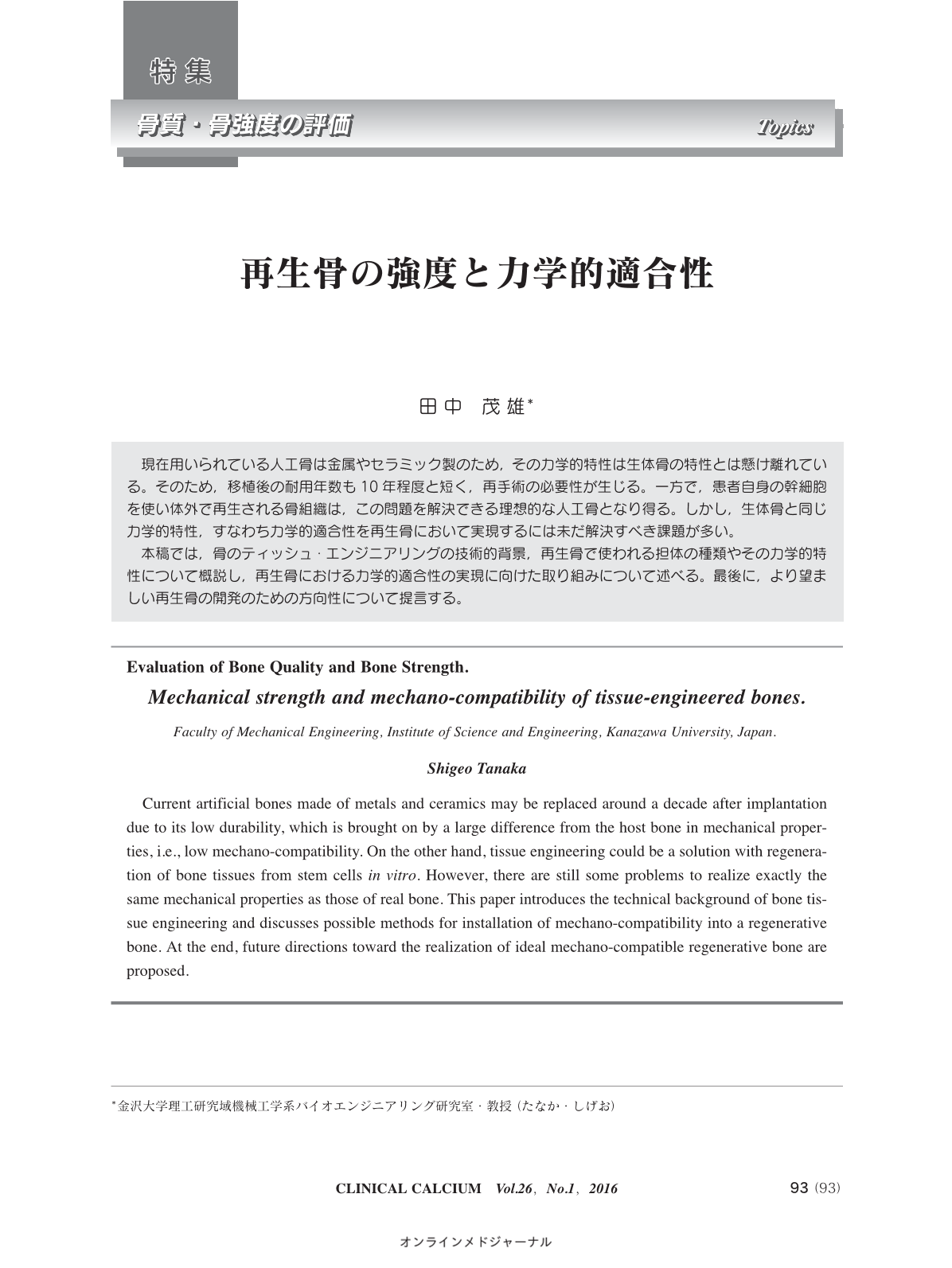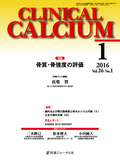Japanese
English
- 有料閲覧
- Abstract 文献概要
- 1ページ目 Look Inside
- 参考文献 Reference
現在用いられている人工骨は金属やセラミック製のため,その力学的特性は生体骨の特性とは懸け離れている。そのため,移植後の耐用年数も10年程度と短く,再手術の必要性が生じる。一方で,患者自身の幹細胞を使い体外で再生される骨組織は,この問題を解決できる理想的な人工骨となり得る。しかし,生体骨と同じ力学的特性,すなわち力学的適合性を再生骨において実現するには未だ解決すべき課題が多い。 本稿では,骨のティッシュ・エンジニアリングの技術的背景,再生骨で使われる担体の種類やその力学的特性について概説し,再生骨における力学的適合性の実現に向けた取り組みについて述べる。最後に,より望ましい再生骨の開発のための方向性について提言する。
Current artificial bones made of metals and ceramics may be replaced around a decade after implantation due to its low durability, which is brought on by a large difference from the host bone in mechanical properties, i.e., low mechano-compatibility. On the other hand, tissue engineering could be a solution with regeneration of bone tissues from stem cells in vitro. However, there are still some problems to realize exactly the same mechanical properties as those of real bone. This paper introduces the technical background of bone tissue engineering and discusses possible methods for installation of mechano-compatibility into a regenerative bone. At the end, future directions toward the realization of ideal mechano-compatible regenerative bone are proposed.



